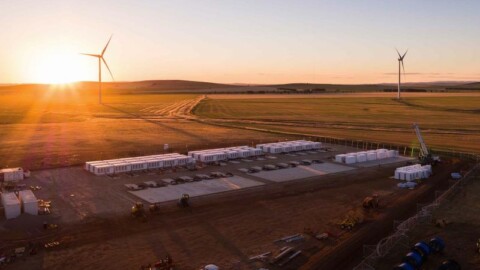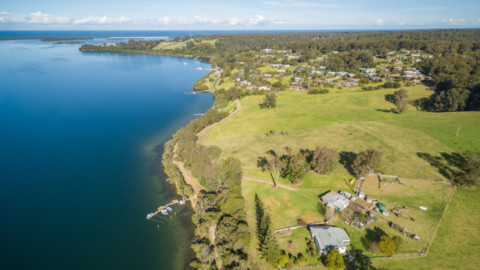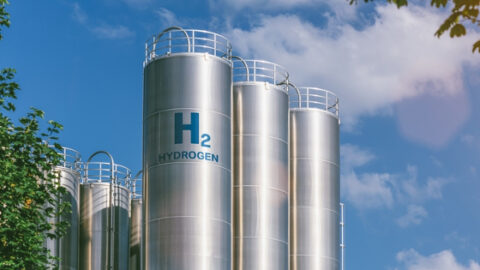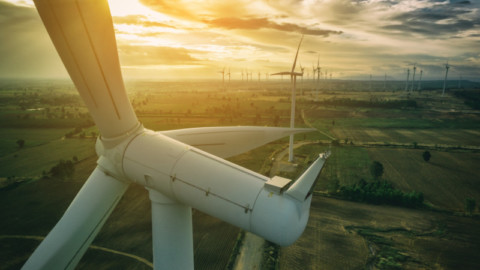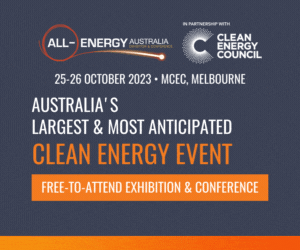By Carolyn Sanders, General Manager Australia, Flotation Energy
As Australia’s transition to a sustainable and low-carbon energy future gains momentum, offshore wind continues to emerge as a crucial component of this transformation. Flotation Energy, a global offshore wind developer, is at the forefront of this movement and globally renowned for pioneering floating offshore wind and energy transition projects.
Our founders, Allan MacAskill and Lord Nicol Stephen, developed Kincardine, the world’s largest floating wind farm. The company is rapidly growing, with the focus on delivering more than 13GW of commercial scale fixed and floating offshore wind farms and has plans to expand into key markets.
In Australia, these include the 1.5GW Seadragon Offshore Wind Project off Gippsland and the 1.5GW Southwest, Perth and Wannaroo Arrays. The opportunities for offshore wind in Australia are boundless. The Gippsland region has a 50-year proud energy legacy. These skills are certainly transferable and Flotation Energy is committed to continuing this legacy for decades to come.
In fact, I myself have transitioned from the oil and gas sector. An Engineer by degree, I worked for 19 years in the Bass Strait oil and gas industry, gaining experience in facilities and pipeline engineering, risk management, safety and environmental management of offshore activities and commercial operations.
Working closely with the Gippsland community, I witnessed firsthand the impact and prosperity that the oil and gas industry brought to the region. As we started to plan for the ultimate decommissioning of the Bass Strait facilities and it became increasingly clear that the world needs to rapidly transition away from fossil fuels, I wondered what the future held for communities like these.
In offshore wind, I could see the future of the Bass Strait offshore energy industry; a chance for the capable local workforce to use their skills and for the region to transition from being known for fossil fuels to being known for large-scale renewable energy. Many of the Flotation Energy team have previous experience in offshore oil and gas and have made the transition smoothly into offshore wind, as I have.
Unlocking Australia’s offshore wind potential
Flotation Energy firmly believes that Australia’s offshore wind industry has the potential to replicate the success of the UK offshore wind industry. However, to realise this potential, the Federal Government needs to establish a clear policy framework that includes generation targets and timelines.
Certainty in policy drives investment, innovation, job creation and economic growth. Victoria has taken a significant step by setting its own offshore wind policy at the state level, but a nationwide approach is needed to unlock the industry’s full competitive potential. Clear federal generation targets will go a long way to providing the necessary confidence needed to drive investment.
Government policies: key to success
Clear policy guidelines serve as a powerful catalyst for investment and commitments from Original Equipment Manufacturers (OEMs) and suppliers. Without a well-defined offshore wind policy, OEMs and suppliers are unlikely to invest in the Australian market.
The UK’s commitment to achieving 50GW of offshore wind capacity by 2030 has attracted substantial investments, including commitments from OEMs and the development of a robust supply chain. Furthermore, government policies play a critical role in the success of the offshore wind industry in Australia and can make or break the fledgling offshore wind industry.
It’s critical to learn the lessons of other markets and embrace the successes. The UK Sector Deal is one such example, which has led to significant cost reductions in new projects. The UK sector deal includes investment of £250 million to develop the UK supply chain, helping to leverage £48 billion of investment and 27,000 jobs – including jobs from the oil and gas sector.
If Australia can look to the UK to learn the hard fought lessons, it is clear that smart policy, coordinated enabling infrastructure and working hand in hand with industry will deliver the renewable energy solutions needed to meet Australia’s commitment to reduce its emissions.
Striking a balance on local content
Promoting local content production is crucial for creating jobs and supporting local economies. However, it is essential to strike a balance to avoid unintended consequences.
In Taiwan for example, unplanned and unrealistic local content policies have driven up power prices. Carefully designed policies that encourage local content without hindering the industry’s growth potential are what is needed to ensure growth of an industry.
Support mechanisms for industry development
There has been no major energy technology that has successfully been brought to market without support mechanisms to build that industry. The offshore wind industry is no different. Certainty around power price support – such as a well-defined contract for difference mechanism or similar – is the single biggest requirement for a positive Final Investment Decision (FID) for an offshore wind farm.
Capital contributions by governments to individual projects tend to be small compared to the significant capital costs of building these projects (billions) and aren’t the key driver towards positive FID. Governments should channel their capital investment into supporting infrastructure including transmission and ports, which will enable the industry as a whole.
Again, the UK Sector Deal is a strong example of how to best unlock a new industry. Significant investment by the UK Government has led to a strong supply chain and a proliferation of new jobs. Australia can harness these lessons to ensure it attracts investment and drives industry growth.
Delivering results
Flotation Energy’s team has a track record of delivering offshore wind projects and has demonstrated its global experience and expertise. The Seadragon project off Gippsland will bring $6.5 billion of investment into the region. This forms part of an estimated $40 billion of proposed energy projects in Gippsland that are already creating employment opportunities and will ultimately lead to a construction boom and long-term operation and maintenance jobs.
Seadragon can be ready in five years and power up to one million homes. The project will create 100 jobs during the development phase, 800 to 1,000 jobs during construction, and 150 to 200 ongoing jobs over its 30-year operational life. Flotation Energy is also working directly with the University of Melbourne to ensure the future workforce has the skills needed for the offshore wind industry.
The Memorandum of Understanding with the University of Melbourne will help to deliver graduates ready to work in the new offshore wind industry, along with cutting-edge research specific to Australian conditions. This is a clear demonstration of the opportunities of the energy transition.
In our view, community engagement is what sets us apart from other proponents. Since 2019, we have been engaging with the local community and we have well-established relationships with key community stakeholders. Ensuring the community can be part of the transition, benefit from the transition and have agency over the developments in their communities is what drives our engagement.
Recognising the strength of Flotation Energy’s projects, in November 2022, Tokyo Electric Power Company (TEPCO) Renewable Power Inc acquired Flotation Energy, making its first equity investment into overseas offshore wind power. TEPCO is Japan’s largest electricity utility and one of the largest in the world. This partnership unlocks significant capital and expertise across all of Flotation Energy’s projects.
Australia has incredible potential to unlock a booming offshore wind industry. Flotation Energy has been working with the Gippsland community since 2019 and is deeply committed to delivering one of its first offshore wind projects. Smart policies, learning the hard fought lessons in other countries and strong industry incentives will ensure the government paves the way for a thriving offshore wind industry.
Image credits: Flotation Energy





